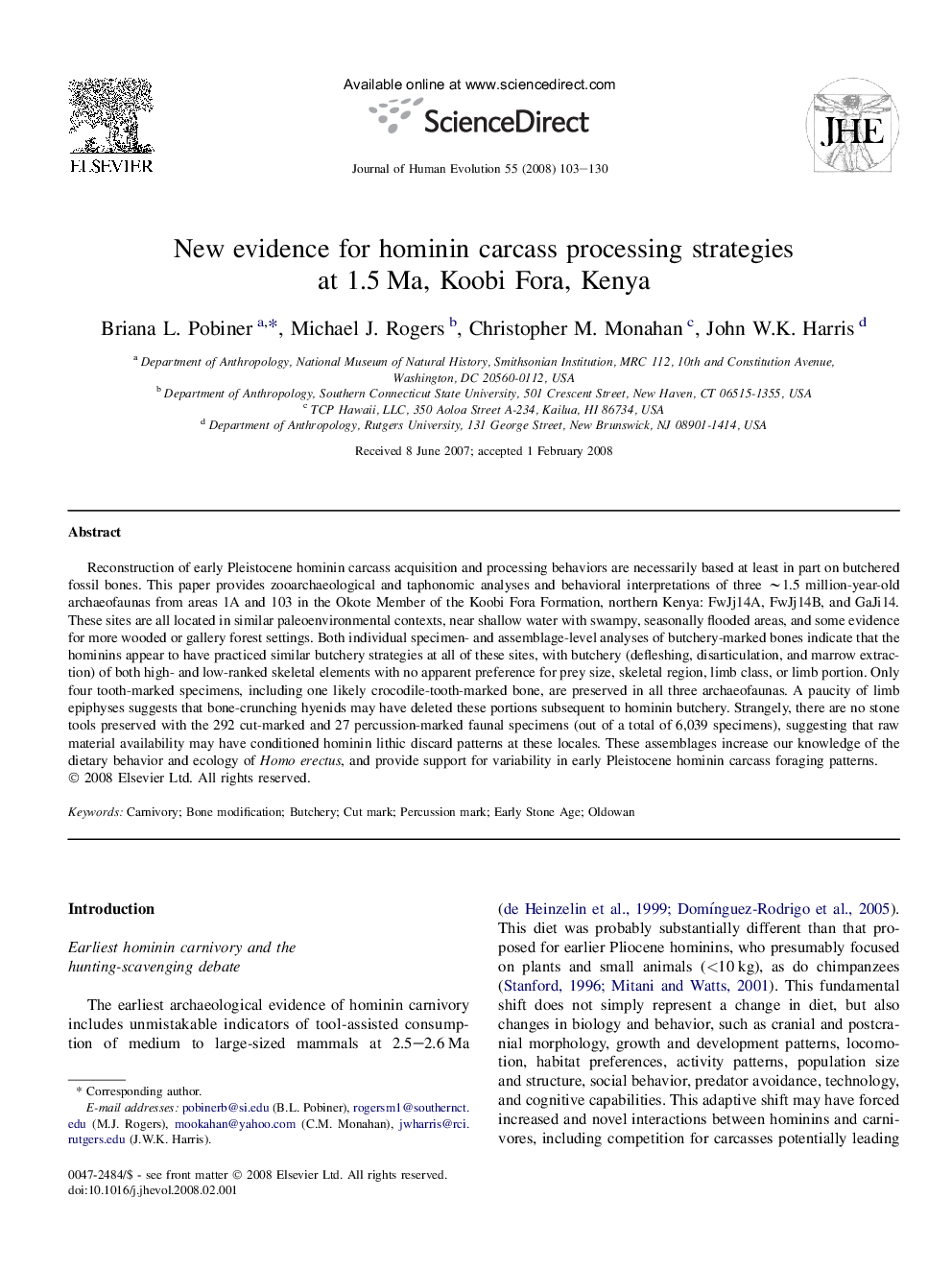| Article ID | Journal | Published Year | Pages | File Type |
|---|---|---|---|---|
| 4557340 | Journal of Human Evolution | 2008 | 28 Pages |
Reconstruction of early Pleistocene hominin carcass acquisition and processing behaviors are necessarily based at least in part on butchered fossil bones. This paper provides zooarchaeological and taphonomic analyses and behavioral interpretations of three ∼1.5 million-year-old archaeofaunas from areas 1A and 103 in the Okote Member of the Koobi Fora Formation, northern Kenya: FwJj14A, FwJj14B, and GaJi14. These sites are all located in similar paleoenvironmental contexts, near shallow water with swampy, seasonally flooded areas, and some evidence for more wooded or gallery forest settings. Both individual specimen- and assemblage-level analyses of butchery-marked bones indicate that the hominins appear to have practiced similar butchery strategies at all of these sites, with butchery (defleshing, disarticulation, and marrow extraction) of both high- and low-ranked skeletal elements with no apparent preference for prey size, skeletal region, limb class, or limb portion. Only four tooth-marked specimens, including one likely crocodile-tooth-marked bone, are preserved in all three archaeofaunas. A paucity of limb epiphyses suggests that bone-crunching hyenids may have deleted these portions subsequent to hominin butchery. Strangely, there are no stone tools preserved with the 292 cut-marked and 27 percussion-marked faunal specimens (out of a total of 6,039 specimens), suggesting that raw material availability may have conditioned hominin lithic discard patterns at these locales. These assemblages increase our knowledge of the dietary behavior and ecology of Homo erectus, and provide support for variability in early Pleistocene hominin carcass foraging patterns.
